The fitness tracking game has completely evolved from those clunky pedometers our parents used to clip on their belts. Today’s devices are sleek, smart, and surprisingly affordable. If you’re hunting for the perfect wearable fitness tracker that won’t drain your bank account, you’ve landed in the right place.
Wearable fitness trackers in 2025 have come a long way, sleek, smart, and far more accurate than the step counters from a decade ago. Whether you’re chasing health goals or just want to know if you’re actually sleeping well, fitness trackers now offer incredible value, even under $200.
This guide is based entirely on secondary research, expert articles, verified user reviews, and brand specifications, to help you find a fitness tracker that suits your lifestyle without breaking the bank.
Top Picks
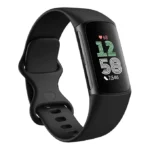
Fitbit Charge 6
Best Price Available:
Amazon :159.95
Target :159.95
BestBuy: 159.95
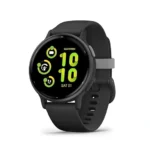
Garmin Vivoactive 5
Best Price Available:
Amazon :$189.99
Target :$249.99
BestBuy: $199.99
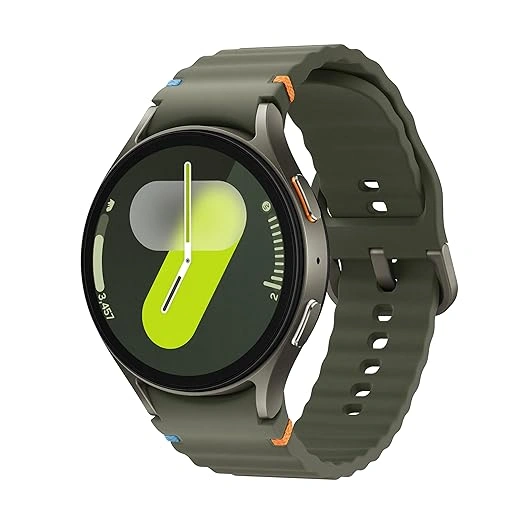
Samsung Galaxy Watch 7
Best Price Available:
Amazon :$249.99
Target :$239.99
BestBuy: $279.99
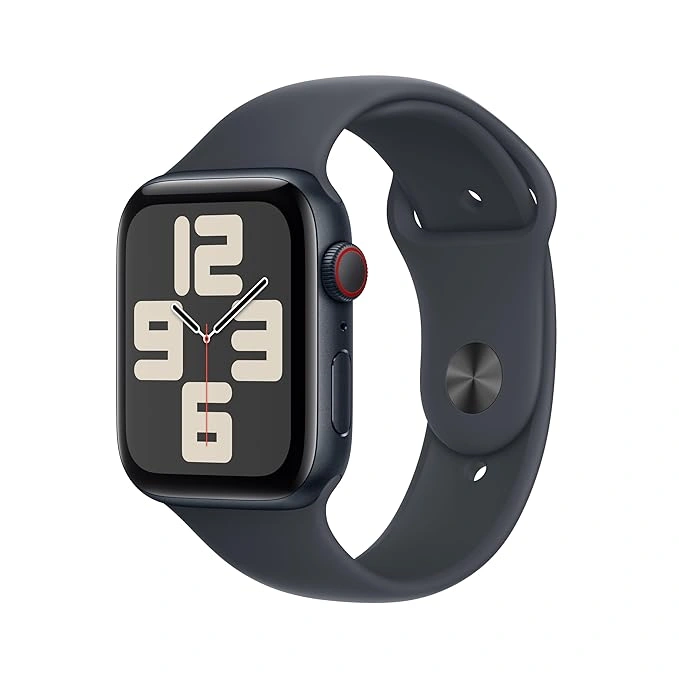
Apple Watch SE (2nd Gen)
Best Price Available:
Amazon :$216.09
Target :$279.99
BestBuy: $279
Why You Should Think of Buying a Wearable Fitness Tracker in 2025
Fitness trackers are no longer niche gadgets. They’ve evolved into health companions, blending minimalist aesthetics with powerhouse sensors and integrations. Many 2025 models now include:
- Accurate heart rate and sleep tracking
- Seamless integration with fitness apps and smartphones
- GPS, water resistance, and long battery life
- Smartwatch features without premium pricing
Whether you’re a runner, lifter, swimmer, or just want a better read on your health, there’s a model here that fits your routine.
Top 5 Wearable Fitness Trackers: Detailed Reviews & Comparisons
1. Fitbit Charge 6 – $156.99 (The All-Rounder Champion)
The Fitbit Charge 6 continues to dominate the fitness tracker space for good reason. This device strikes the perfect balance between advanced features and user-friendly design, making it ideal for both fitness newbies and seasoned athletes.
Best For: Balanced tracking + user-friendly experience
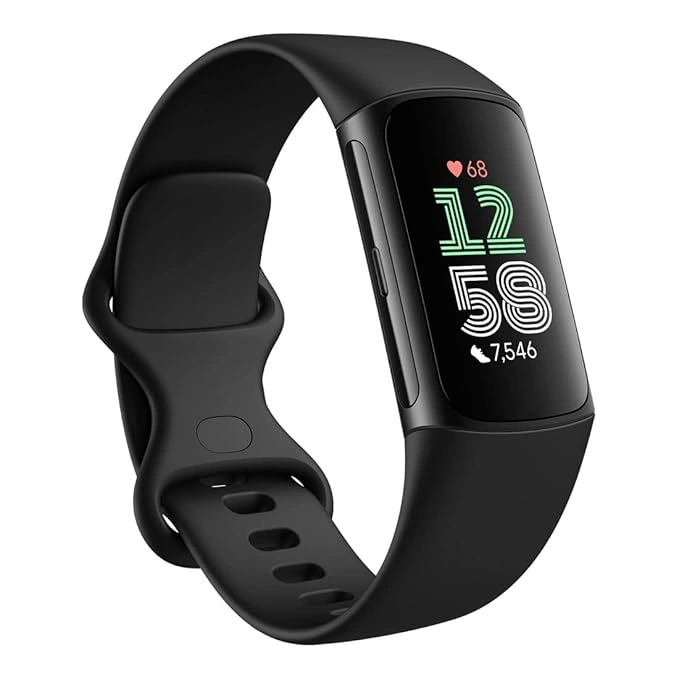
Pros
- Great heart rate accuracy
- Built-in GPS & solid sleep insight
- 7-day battery life
Cons
- Premium subscription required for full features
- Screen visibility outdoors could be better
The Charge 6 excels in fitness tracking fundamentals while offering enough smart features to keep you connected. Its sleep tracking capabilities provide detailed insights into your sleep quality, helping you optimize your rest for better recovery metrics.
2. Garmin Vivoactive 5 – $189.99 (The Versatile Performer)
Garmin’s Vivoactive 5 pushes the boundaries of what a sub-$200 tracker can accomplish. This device targets users who want comprehensive fitness tracking without sacrificing style or functionality.
Best For: Serious multi-sport users
Pros
- Advanced training & recovery features
- Stainless steel design with long battery life
- Offline maps for runners/hikers
Cons
- Limited 3rd-party app options
- Slightly bulky on smaller wrists
The Vivoactive 5 shines for people serious about diverse fitness goals. Its strength training features automatically detect and count reps, while the recovery metrics help you understand when to push harder or take rest days.
3. Samsung Galaxy Watch 7 – $159.99 (The Android Enthusiast’s Choice)
Samsung’s Galaxy Watch 7 brings flagship smartwatch features to the fitness tracker price point, making it a compelling option for Android users seeking comprehensive health monitoring.
Best For: Android power users
Pros
- Full Samsung Health integration
- Tracks blood oxygen and blood pressure
- Sleek, professional design
Cons
- Battery life shorter than rivals
- Best features require Samsung phone
This watch excels at providing detailed health insights beyond basic fitness tracking. Its blood pressure monitoring feature sets it apart from traditional trackers, offering valuable health data for proactive wellness management.
4. Apple Watch SE (2nd Gen) – $199.99 (The iOS Ecosystem Master)
Apple’s Watch SE delivers core Apple Watch functionality at a more accessible price point, making it perfect for iPhone users who want premium fitness tracking without the flagship price tag.
Best For: iPhone users
Pros
- Deep iOS ecosystem support
- Great for casual workouts and lifestyle monitoring
- Family setup and tons of apps
Cons
- Daily charging required
- No always-on display
The Watch SE excels in the Apple ecosystem, offering features that dedicated fitness trackers simply can’t match. Its integration with iOS health apps creates a comprehensive wellness picture that motivates consistent healthy habits.
5. Amazfit GTR 4 – $149.99 (The Budget Champion)
The Amazfit GTR 4 proves that exceptional fitness tracking doesn’t require premium pricing. This device offers impressive features that rival more expensive competitors while maintaining an attractive price point.
Best For: Budget shoppers wanting big value
Pros
- 14+ days battery
- 150+ sports modes
- Built-in GPS
Cons
- Limited app integration
- Customer service can be hit or miss
This tracker delivers where it counts most accurate fitness tracking and reliable performance. Its extended battery life means you’ll spend more time tracking and less time charging, which is exactly what active users want.
Ideal Cost of Wearable Fitness Tracker That Offers Best Value
Understanding the sweet spot for wearable fitness tracker pricing helps you make smarter purchasing decisions. The under-$200 market segment offers incredible value, but knowing where to invest your money makes all the difference.
| Fitness Tracker Price Range Comparison | ||||
| Price Range | Best For | Key Features | Top Picks | Value Proposition |
| Budget – $50-$100 | Beginners | Basic tracking, heart rate, steps | Xiaomi Smart Band 9 | Great entry point without complexity |
| Mid-Range – $100-$150 | Everyday users | GPS, better sensors, health metrics | Fitbit Inspire 3, Amazfit GTS 4 | Best value for money : Advanced features without premium pricing |
| Premium – $150-$200 | Enthusiasts | Smartwatch features, accuracy, ecosystem integration | Charge 6, Vivoactive 5, Galaxy Watch 7 | Justifies higher cost through better health outcomes and sustained motivation |
The ROI analysis depends on your lifestyle and fitness goals. If you’re serious about tracking fitness progress and want data that influences your daily decisions, investing in the $150-$200 range pays dividends through better health outcomes and sustained motivation.
| ROI Analysis by User Type | |||
| User Profile | Recommended Range | Expected Benefits | Investment Justification |
| Casual User | $50-$100 | Basic activity awareness | Low-cost entry to fitness tracking |
| Regular Exerciser | $100-$150 | Comprehensive fitness insights | Optimal feature-to-price ratio |
| Fitness Enthusiast | $150-$200 | Advanced metrics & integration | Data influences daily decisions for better health outcomes |
Pro Tip: $100–$150 offers the best balance of value and features for most users.
Key Features You Should Check in a Wearable Fitness Tracker Before Buying
Heart Rate Monitoring: Optical sensors are now highly accurate, even during workouts. Heart rate monitoring accuracy separates good trackers from great ones. Look for devices with optical heart rate sensors that provide consistent readings during both rest and intense workouts. The best trackers maintain accuracy even during high-intensity strength training sessions where arm movements can interfere with sensor readings.
Battery Life: Aim for 7+ days unless you’re buying a full smartwatch. Battery life directly impacts your tracking consistency. Devices offering 7+ days of battery life ensure you’re not constantly worrying about charging. This becomes crucial when you’re tracking sleep quality, a dead battery means missing valuable sleep insights that help optimize your recovery.
Water Resistance: Look for 5ATM or higher for safe swimming use. Water resistance ratings determine how versatile your tracker can be. Look for devices rated for swimming if you enjoy aquatic activities. Most quality trackers offer at least IPX7 rating, protecting against sweat and rain during outdoor workouts.
Sleep Tracking: Choose models with REM, deep/light cycle tracking. Sleep tracking capabilities have evolved significantly, with modern devices providing detailed insights into sleep stages, quality scores, and recovery recommendations. The best trackers monitor your sleep patterns and offer actionable advice for improving rest quality.
GPS Accuracy: A must-have if you run, cycle, or hike outdoors. GPS accuracy matters for outdoor activities and distance tracking. Built-in GPS eliminates the need to carry your phone during runs while providing precise route mapping and pace analysis. This feature becomes essential if you’re training for specific distance goals or exploring new running routes.
App Ecosystem: Fitbit and Garmin lead in compatibility across platforms. App ecosystem compatibility ensures your tracker integrates with your existing health and fitness apps. This connectivity amplifies your tracker’s value by creating a comprehensive wellness dashboard that tracks progress across multiple platforms.
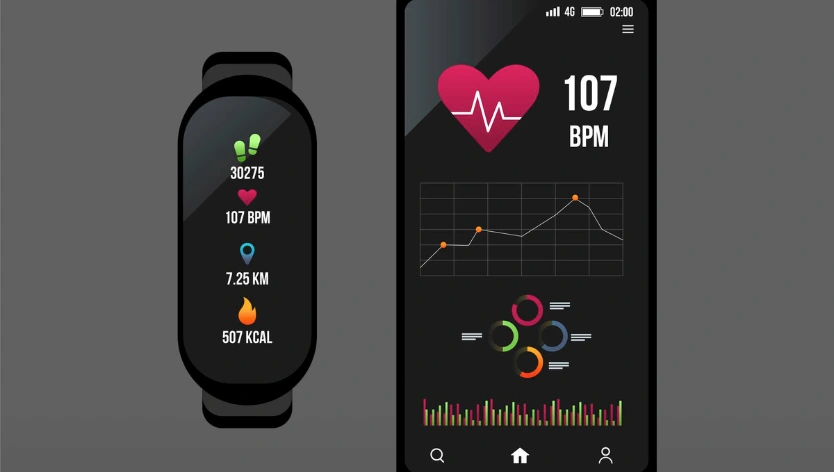
Perfect Wearable Fitness Tracker That Matches Your Lifestyle
Activity-specific recommendations help narrow your choices based on your primary fitness interests. Runners benefit from trackers with excellent GPS accuracy and offline maps support. Swimmers need robust water resistance and specialized swimming metrics. Strength training enthusiasts should prioritize devices with automatic rep counting and recovery metrics.
Runners: Look for GPS + offline maps (Garmin Vivoactive 5)
Swimmers: Choose 5ATM+ waterproof models (Galaxy Watch 7, Charge 6)
Style and comfort factors influence daily wear consistency. The best tracker is one you’ll actually use every day, so choose a design that complements your personal aesthetic. Consider band materials, case sizes, and color options that match your wardrobe and lifestyle preferences.
Integration with existing devices creates a seamless user experience. If you’re deep in the Apple ecosystem, the Apple Watch SE provides unmatched integration. Android users benefit from Samsung’s comprehensive health platform integration. Consider how your tracker will connect with your smartphone, apps, and other smart devices.
Apple Users: Apple Watch SE wins with smooth iOS integration
Budget-Conscious: Amazfit GTR 4 offers premium value at a lower cost
Long-term value considerations include software update policies, customer support quality, and ecosystem development. Established brands typically provide longer support lifecycles and more consistent feature updates, ensuring your investment remains relevant and functional over time.
Making the Smart Choice: Your Next Wearable Fitness Tracker Awaits
Fitness trackers under $200 in 2025 offer exceptional performance for almost every kind of user. Whether you want to close rings, count steps, monitor sleep, or track calories burned, there’s an affordable tracker that does it well.
The key is matching your tracker choice to your actual lifestyle and fitness goals rather than getting caught up in feature lists you’ll never use. Start with the fundamentals, accurate heart rate monitoring, reliable battery life, and consistent sleep tracking, then add advanced features that align with your specific needs.
Don’t let FOMO drive you toward the most expensive option when a mid-range device might serve you better. The best fitness trackers are the ones you’ll consistently wear and actively use to make healthier decisions every day.
Ready to upgrade your wellness game? Choose the tracker that speaks to your lifestyle, set it up properly, and start building the healthy habits that will define your 2025 fitness journey. Your future self will thank you for making the smart choice today.
All recommendations in this article are based on curated secondary research from reliable tech sources, user feedback, and product documentation to ensure unbiased, informed guidance.
Frequently Asked Questions (FAQ) : Fitness Tracker
Q1: How accurate are fitness trackers under $200 for heart rate monitoring?
Modern fitness trackers under $200 offer surprisingly accurate heart rate monitoring, typically within 5-10% of chest strap monitors during steady-state activities. The Fitbit Charge 6 and Garmin Vivoactive 5 perform exceptionally well during workouts, though accuracy may decrease during high-intensity interval training or strength training with rapid arm movements. For most users, this level of accuracy is more than sufficient for tracking fitness trends and making informed decisions about workout intensity.
Q2: Do I really need GPS in my fitness tracker, or can I use my phone instead?
A: Built-in GPS is a game-changer for serious runners and outdoor enthusiasts. While you can use your phone’s GPS, having it built into your tracker means you can leave your phone at home during workouts, track routes automatically, and get more accurate distance measurements. If you primarily do indoor workouts or don’t mind carrying your phone, you can save money with a non-GPS model. However, GPS-enabled trackers like the Garmin Vivoactive 5 also provide offline maps, making them invaluable for hiking or exploring new running routes.
Q3: How long should I expect my fitness tracker battery to last, and what affects battery life?
A: Battery life varies dramatically based on features and usage patterns. Budget trackers typically last 7-14 days, while feature-rich devices may require charging every 2-7 days. Factors that drain battery fastest include: always-on displays, continuous GPS tracking, frequent notifications, and heart rate monitoring during workouts. The Amazfit GTR 4 leads with 14+ days of battery life, while the Apple Watch SE requires daily charging. Pro tip: Turn off always-on display and limit notifications to extend battery life significantly.
Q4: Are fitness trackers waterproof enough for swimming and showering?
A: Most quality fitness trackers under $200 offer water resistance ratings of 5ATM or 50 meters, making them suitable for swimming, showering, and water sports. However, “waterproof” is a strong claim, these devices are water-resistant. The Samsung Galaxy Watch 7 and Fitbit Charge 6 handle pool swimming excellently and even track swimming metrics. Avoid pressing buttons underwater and rinse with fresh water after ocean swimming. Hot water from showers and saunas can potentially damage seals over time, though most users never experience issues.
Q5: Can I use a fitness tracker with both Android and iPhone, or am I locked into one ecosystem?
A: Most fitness trackers work with both Android and iPhone, but functionality may vary. Fitbit, Garmin, and Amazfit offer full cross-platform compatibility with their dedicated apps. However, ecosystem-specific devices like the Apple Watch SE only work with iPhones, while Samsung Galaxy Watch 7 offers limited functionality with iOS devices. If you’re considering switching phone brands in the future, stick with platform-agnostic options like Fitbit or Garmin. Always check compatibility before purchasing, especially for advanced features like notifications and third-party app integration.
Read More: Smart Wearable for the Future ? Wear It to Believe It

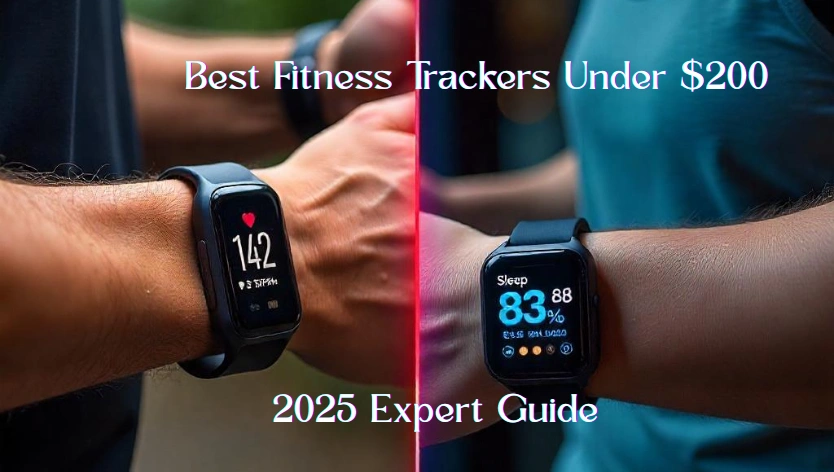
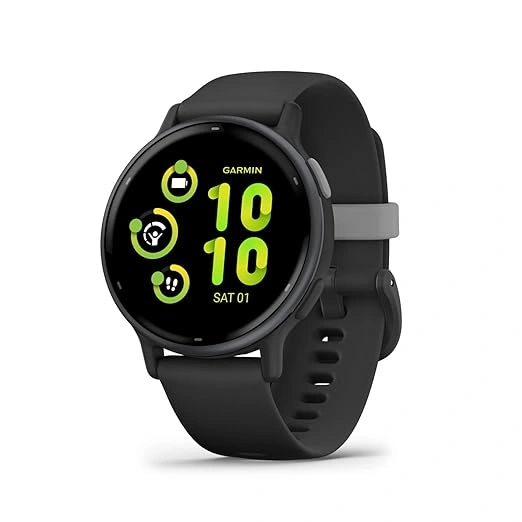
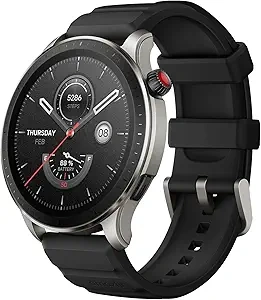
[…] to rise from USD 57.98 billion in 2024 to USD 148.88 billion by 2030, growing at a CAGR of 17.1%. Fitness trackers currently hold a dominant 41.9% share of device revenue, while smartwatches are emerging as the […]
[…] long ago wearing a device on your wrist that counted your steps felt futuristic. Today the smartwatch fitness tracker has become as common as a smartphone. These small devices do much more than tell the time. They […]